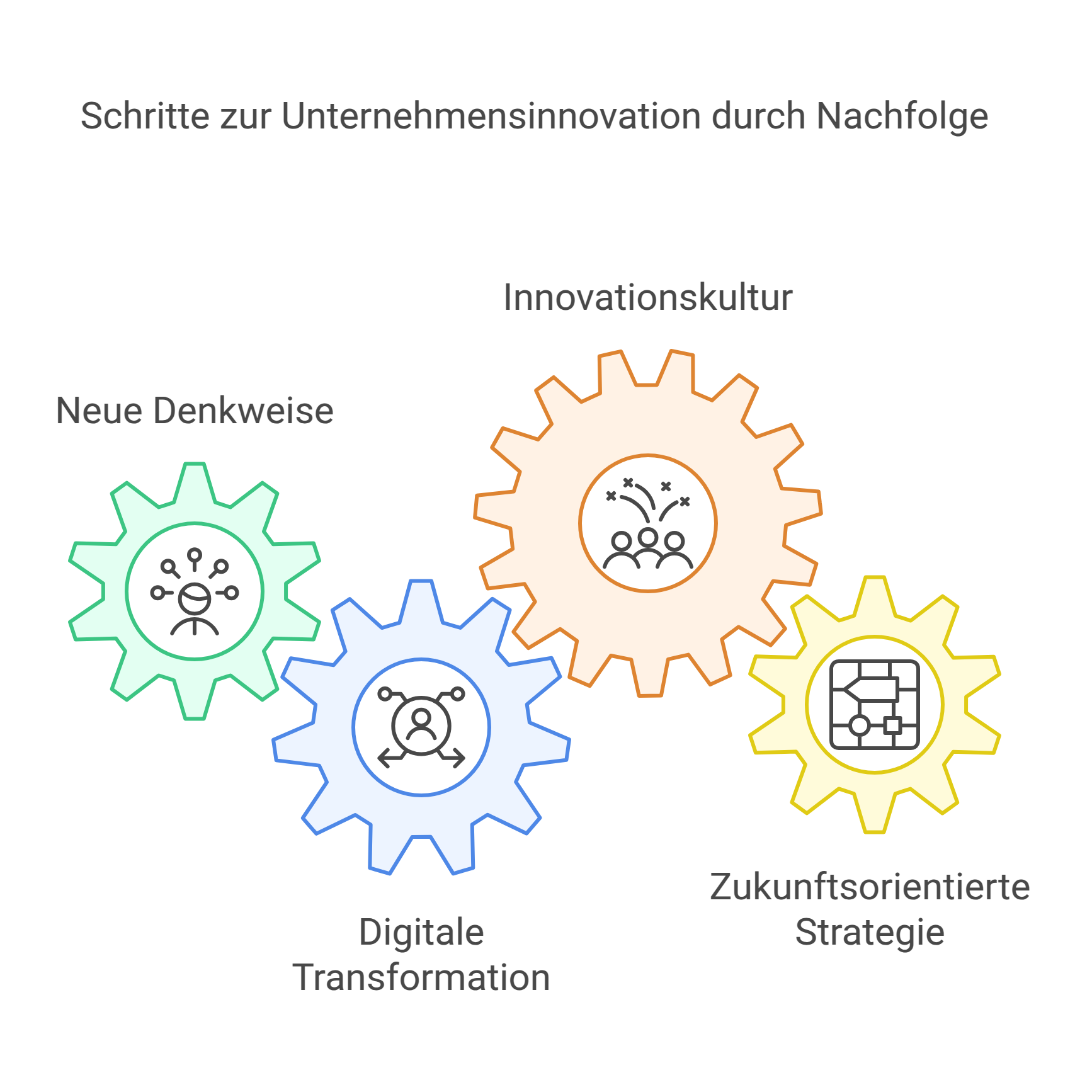Succession as a Driver of Innovation: How New Ideas and Digital Transformation Succeed
Learn how business succession represents an ideal window of opportunity for innovation and digitalization.
A business succession is much more than just a change at the top. It is a unique opportunity to bring fresh momentum into established structures and prepare the company for the future. Because with a new captain at the helm, new ideas, perspectives, and impulses often come on board. Especially in times of digital transformation, this fresh perspective can be crucial to avoid falling behind.
New Generation, New Mindset
Young successors often bring a different mentality and way of thinking. They have grown up with digital technologies, keep an eye on global trends, and are not afraid to leave established paths. This innovative strength is an invaluable asset for companies that need to assert themselves in an increasingly dynamic and disruptive market environment.
However, innovation does not mean throwing overboard everything that has been successful so far. Rather, it is about further developing the existing business model and combining it with new approaches. One example: a traditional machine manufacturer that expands its offering with digital services and platforms. Or a retail company that builds an online channel alongside its brick-and-mortar business. The successor as an innovator bridges the gap between tradition and modernity.
Digital Transformation as a CEO’s Priority
A key driver of innovation is digitalization. It changes not only products and processes but also the way we work and communicate. For many established companies, digital transformation is a huge challenge—technologically, organizationally, and culturally. It requires a rethink in all areas and at all levels.
Succession is an ideal time to advance the digital agenda. The new CEO can make this a top priority, mobilize resources, and initiate cultural change. This involves not only investments in hardware and software but, above all, a change in mindset and working methods.
Some starting points for digital innovation in succession include:
- Building digital competencies through training and recruitment
- Introducing agile methods and flatter hierarchies
- Creating experimentation spaces and innovation labs
- Collaborating with start-ups, universities, and technology partners
- Developing data-driven business models and services
- Integrating artificial intelligence into products and processes
The key to success lies in combining digital expertise with industry experience. As a "digital native," the successor brings the necessary know-how and mindset. In dialogue with experienced employees and managers, they can develop tailored solutions for the company.
Innovation Culture as a Success Factor
Digital transformation is not only a technological but also a cultural task. Innovation requires an environment where new ideas are welcomed, mistakes are allowed, and change is seen as an opportunity. A culture of openness, agility, and collaboration.
For many family businesses, this means moving away from traditional hierarchies and mindsets. The succession process offers the chance to initiate a mindset shift not only at the top but throughout the organization. Through flatter structures, interdisciplinary teams, and open communication, employees can be actively involved in the innovation process.
An important factor for a lived innovation culture is employee empowerment. They need freedom and resources to develop and implement their own ideas. The successor as an "enabler" creates the framework for creativity and entrepreneurial thinking at all levels. They inspire and motivate the workforce to actively contribute to shaping the future.
Conclusion: Succession as a Future Project

A successful business succession is much more than passing the baton from one generation to the next. It is a future project that sets the company on a new course for success. With fresh ideas, digital expertise, and an innovation culture in tow, the successor can become a driver of change.
But caution: innovation is not an end in itself. It must always create added value for customers, employees, and the company. Therefore, it is essential to carefully weigh which innovations are sensible and feasible. The art lies in balancing preservation and change, continuity and new beginnings.
For entrepreneurs who want to prepare their business for the future, finding a successor with a strong innovation mindset is one of the most important tasks. Conversely, succession offers innovation-minded founders the chance to combine their ideas with entrepreneurial substance. If both sides approach each other openly and with a willingness to learn, a win-win situation for tradition and innovation can emerge.
Are you facing a succession and looking for ways to make your company future-ready? We are happy to support you in developing a forward-looking innovation and digitalization strategy. Contact us and let’s take your company to the next level together.

Artur Morozas
Co-Founder & CEO
For Artur, Managing Director of viaductus, succession in the German SME sector is a topic close to his heart. After studying at the Technical University of Munich, he founded viaductus to help companies and entrepreneurs successfully transition to the next generation.
About the author

Artur Morozas
Co-Founder & CEO